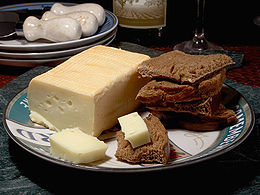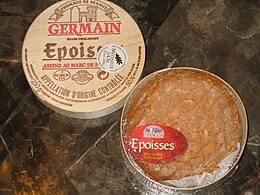Here’s what I noticed about Ottawa in December: It’s colder than Toronto. But Torontonian’s aren’t known for their hardy winter endurance. We were, after all, the laughing stock of the nation, after one particularly bad snowstorm. The then-Mayor, called in the army to help dig the city out, and the rest of the country laughed. Out loud. To our faces. But cold is cold, and Ottawa is colder than Toronto. It just is.
That doesn’t mean Ottawa, Canada’s capital, should be
avoided in the winter season.
Ottawa, a city with a population of just over 880,00 people, is filled with history, museums, exhibits, architectural gems, restaurants, spas, skating, shopping and fun-filled activities to
keep you returning time after time. Year-round.
Sure, it may be chilly, but with so much to do and fewer
crowds to contend with, winter is a perfect time for a getaway to the nation’s
capital.
Here are just 10 reasons to visit Ottawa this winter:
Christmas Lights Across Canada
 |
| Photo via Ottawa Tourism |
The 31st edition of Christmas Lights Across
Canada was launched on December 2, 2015, with the official illumination
ceremony on Parliament Hill. Thousands gathered, as they do each year, for this
annual ceremony. Every year, as part
of Christmas Lights Across Canada, each province and territory decorates its
capital city and holds its own lighting ceremony, contributing to the
nationwide effort. Lights Across Canada illuminates the Capital until January 7, 2016.
Le Nordik Nature Spa
 |
| Photo via Le Nordik Spa |
Located in Chelsea, Québec, an easy 15-20 minute drive from
Ottawa’s city-center, Le Nordik Nature Spa is North America’s largest spa. It
offers 45,000 square feet of relaxing interior space and more than 100,000
square feet outside. Our orientation to the property, which is surrounded by
trees and rocks, included the recommended spa routine: 15-20 minutes of heat in
one of several outdoor saunas or hot pools (which we did), followed by 30 seconds in a cold plunge
pool (which we didn't). Repeat and relax in a nearby warm cabin. There’s an infinity pool with
panoramic views over the city and the salt-water floating pool is a must.
Take a Short Course at Le Cordon Bleu
 |
| Photo via Ottawa Tourism |
Learn to cook like a pro! Make pasta, sauces, chocolate creations or bake. If
you’ve had one too many knife accidents in the kitchen, the demo on proper
knife skills is for you. Do it all at the world’s leading cooking institution.
Ottawa, is where you’ll find Canada's only Le Cordon Bleu satellite school.
Choose from a demonstration, which lasts approximately two hours, or a
combination of demo and hands-on practice. The latter is approximately four
hours. Be sure to take along containers to bring your goodies home. There will
be plenty of them. I seriously can’t think of anything more ‘homey’ to do on a
cold winter day, than to surround the senses with warm deliciousness. If it was
good enough for Julia Child…
Learn About Vikings
 |
| Photo via Ottawa Tourism |
Challenge your assumptions about ancient Scandinavians. Vikings, redefines
what we know about this mythical period in Scandinavia. It features more than
500 ancient artifacts on loan from the Swedish History Museum. Many of the
pieces on display have rarely been displayed outside Scandinavia. Vikings is at the Canadian History Museum, and runs until April 17, 2016.
Check Out Forged in Fire
 |
| Photo via Bytown Museum |
Opening January 29, 2016, this new temporary exhibit, Forged in Fire: The Building and Burning
of Parliament, begins its
run. The exhibit highlights the 100th anniversary of the fire that destroyed
the original Parliament Buildings. It explores the history of the site and the
buildings that have called it home throughout its nearly 200-year evolution. The exhibit features artifacts and photographs from Bytown Museum collection, including rare images of the construction of
Parliament by early Ottawa photographer, Elihu Spencer. It runs until October 31, 2016.
Discover Amazing Women
 |
| Photo via Canadian War Museum |
Through artifacts,
images, audiovisual material, oral history and text, World War Women, at the Canadian War Museum, delves
into the personal stories of the women associated with these materials. It is
organized in stand-alone thematic zones, each devoted to an element of the wars
that particularly involved and affected women. The contributions made by women
to the Canadian war efforts were crucial, and their experiences forged a new
understanding of women’s capabilities both within themselves and within
society. It’s touching, moving and deeply personal. Don’t miss it. World War Women is on now and runs until April 3, 2016.
Winterlude
 |
| Photo via Ottawa Tourism |
So it’s cold. Big deal! It was with winter in mind, that
Winterlude was created in the first place – to celebrate our unique
northern climate and culture. Winterlude is a three-day fun-filled
event with activities for the entire family. Check out the ice sculpture
competitions, play in North America’s largest snow playground and don’t miss
the 36th annual Accora Village Bed Race. This event features teams
in costumes racing huge decorated beds across frozen ice. Winterlude runs January 29 – February 15,
2016.
Gatineau Winter Beerfest
 |
| Photo via Ottawa Tourism |
What better time for a beerfest than in the dead of winter.
Only in Canada eh! The beerfest is held at the Canadian Museum of History. Here you'll discover
over 100 craft beers by brewers from Quebec and Ontario. More than 30 breweries
will be on hand. Chef, Martin De Board, the museum’s head chef, will create
appetizers to tantalize the most gourmet of taste buds. The Gatineau Winter Beerfest in on January 29-30. It's held inside the museum's Grand hall and outdoors (of course).
After an activity-filled day, catch your breath, quench your
thirst and fill your appetite in this central Ottawa restaurant. The Albion Rooms, is a warm, conversation-friendly restaurant. Cozy up to
the bar and chat to the server as he assembles your chacouteri platter. Chef, Stephen LaSalle, has put his personal touch on several traditional British
dishes, giving new twists to dishes like scotch eggs and Cornish hen. The
Albion Rooms is located inside the Novotel (across from Rideau Centre
mall).
Skate, Skate and Skate Some More
 |
| Photo via Ottawa Tourism |
In addition to the famous Rideau Canal Skateway
(opens early January), Ottawa provides a few other
skating options:
The Skating Court, a refrigerated
ice skating rink in Lansdowne Park, offers free open skating as well as
skating programs.
Free
skating is also available on the refrigerated surface of the Sens
Rink of Dreams, located just outside Ottawa City Hall.
The
historic skating rink at Rideau
Hall, the home and workplace of Canada’s Governor General, offers free
public skating each Saturday and Sunday between January 10 and March 15,
weather permitting.






















